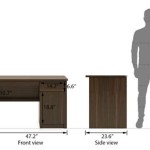Regulation Height of the Table Tennis Net: A Guide to Proper Play
Table tennis, also known as ping-pong, is a popular and engaging sport enjoyed by individuals of all ages and skill levels. A crucial element in ensuring fair and competitive play is the regulation height of the table tennis net. This standardized dimension plays a significant role in defining the playing surface and facilitating consistent rallies between opponents. Understanding the precise height of the net and its implications for gameplay is essential for both players and officials.
The Importance of Standardized Net Height
The regulation height of the table tennis net is not arbitrary but rather a carefully calibrated benchmark that ensures fairness and consistency in the game. This standardized dimension avoids any potential advantage or disadvantage that could arise from variations in net height across playing surfaces. Maintaining a consistent net height ensures that the ball must clear a specific obstacle, creating a level playing field for all participants. This uniformity allows for:
- Fair Competition: Every player faces the same obstacle when returning the ball, providing a level playing field for all skill levels.
- Consistency in Gameplay: The standardized net height contributes to predictable gameplay. Players can anticipate the trajectory of the ball and make strategic decisions accordingly.
- Accurate Judging: Officials can easily determine if a ball has cleared the net based on the established height, making it easier to make fair calls.
The Regulation Height: A Crucial Dimension
As per the International Table Tennis Federation (ITTF) regulations, the table tennis net must be exactly 15.25 centimeters (6 inches) high at the center. This height is measured from the top of the table surface. This specific height is crucial because it dictates the path the ball must traverse to remain in play. The net acts as a physical barrier, preventing the ball from passing directly from one side of the table to the other, forcing players to engage in strategic rallies.
The net's height influences the difficulty of certain shots and the strategy employed by players. For instance, a low shot, barely clearing the net, can be challenging for the opponent to return, while a high, looping shot may sail over the net with ease. This interplay between the net's height and the ball's trajectory forms the basis for skilled table tennis play.
Proper Net Installation and Maintenance
Ensuring the net is correctly installed and maintained is essential for adhering to the regulation height and maintaining fair gameplay. Here are some key points to consider:
- Net Posts: The net posts, which support the net, must be placed firmly at the ends of the table, ensuring the net remains taut and at the correct height.
- Net Tension: The net should be taut, but not overly stretched to ensure it doesn't sag. This prevents the ball from potentially being obstructed by a loose net.
- Net Material: The net should be made of a durable, non-stretchable material, such as nylon or mesh, to maintain its shape and height over time.
Regular inspection and adjustments of the net are crucial for ensuring proper gameplay. Players and officials should be vigilant in verifying the net's height and ensuring it adheres to the regulations. A correctly sized, well-maintained net contributes significantly to the quality of the game and fosters a fair and enjoyable experience for all participants.

Ping Pong Table Dimensions The Guy

Table Tennis Dlgsc

Table Tennis Net

Table Tennis Room Size Court And Dimensions

Table Tennis Measurements Size And Dimensions Cornilleau

Table Tennis Tables Which Is Right For Me Hart Sport New Zealand

Tennis Court Dimensions Size Net World Sports

Table Tennis Buyer S Guide Liberty

Table Tennis Net Guage For Regulation Height Of Pack 1

Table Tennis Scientific Diagram








